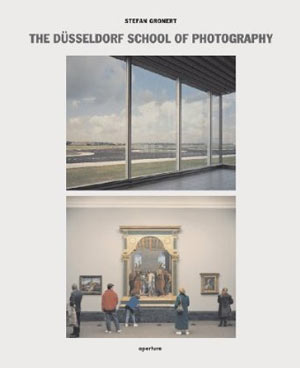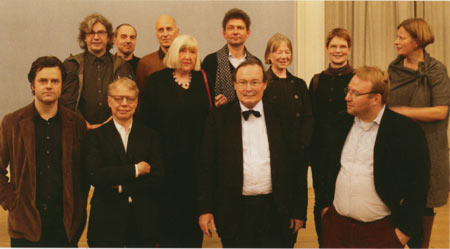Review: The Düsseldorf School of Photography by Stefan Gronert

To a large extent, contemporary photography looks the way it does because of two major revolutions. The first, originating in the US in the 1970s, not only made colour photography the dominant image mode, but also opened up new ways of seeing. The second, originating in Düsseldorf, Germany, very forcefully also made us see things in new ways. Thankfully, there are now two new books that talk about these two revolutions. The first, Starburst: Color Photography in America 1970-1980, I reviewed last week. The second, The Düsseldorf School of Photography is the subject of this review.
The story of Düsseldorf photography is about as well known as that of American colour photography in the 1970s. In both cases, some names are widely known, others not so much. The importance of having these two books available now - both elaborate productions with smart (and nicely readable) text - cannot be stressed enough, in particular since both books do away with simplifications and lazy arguments. In both cases, there are many important details, which add layers of meaning and an unexpected variety. And this is really why even those who think they know the stories want to read these books: Both revolutions had (have) considerably more facets than what is commonly known; and being exposed to a large variety of work makes the overall experience all the more enjoyable.
In a nutshell, the story of the Düsseldorf is usually told as first there were Bernd and Hilla Becher with their grids of black and white industrial topologies, and then we got the students, in particular Thomas Struth, Thomas Ruff, and Andreas Gursky (the Struffkys) who made and still make millions with their huge colour prints. Simplified as they may be, these facts are indeed are correct, but it is hard to understand how it all fits together.
The Düsseldorf School of Photography presents the evolution of the Düsseldorf school, its relation to other, formerly dominant German photography schools, and many of its artists. It stresses the interrelations between these artists and their differences - thus appropriately painting a colour picture that is in stark contrast to the rather b/w sketch I used in the last paragraph.  A large part of the Düsseldorf school, back row (from left to right): Thomas Ruff, Jörg Sasse, Axel Hütte, Hilla Becher, Ulrich Gambke, Candida Höfer, Simone Nieweg, Mette Tronvoll; front row (ditto): Laurenz Berges, Rudolf Schöttle, (publisher) Lothar Schirmer, Elger Esser.
A large part of the Düsseldorf school, back row (from left to right): Thomas Ruff, Jörg Sasse, Axel Hütte, Hilla Becher, Ulrich Gambke, Candida Höfer, Simone Nieweg, Mette Tronvoll; front row (ditto): Laurenz Berges, Rudolf Schöttle, (publisher) Lothar Schirmer, Elger Esser.
For example, there is a discussion of the kind of portraiture Thomas Ruff has become well known for (the samples in the book depict Ruff’s co-students - who are also represented as artists in other chapters), which, as it turns out, was produced in pretty much the same fashion by Axel Hütte’s. Gronert writes “the astonishing thing about all this is that Hütte’s portraits made practically no impact, whereas Thomas Ruff’s met with great success. Especially when Hütte’s and Ruff’s portraits are viewed side by side […] this outcome seems extraordinary, and cannot be explained simply by the difference between black and white and colour.” What I find particularly interesting about this discussion alone is that we have a writer acknowledging explicitly that success sometimes seems arbitrary - luck/chance does play a role in making an artist (and we’d all be well served to remember this).
As in the case of Starburst: Color Photography in America 1970-1980, some of the work in The Düsseldorf School of Photography might become a discovery for some readers. I’ve always thought that photographers like for example Jörg Sasse or Simone Nieweg deserved much more attention than they received so far (Nieweg’s landscape studies are incredibly lush and intensely beautiful).
All of this makes The Düsseldorf School of Photography a must buy for anyone interested in contemporary photography - along with Starburst: Color Photography in America 1970-1980 the book can serve as a fantastic introduction to the people who made contemporary photography what it currently is. Needless to say, photography teachers definitely want to put their orders in: What Badger/Parr’s book on photo books did for the history of that medium, these two books do for the recently laid foundations of contemporary photography.
The Düsseldorf School of Photography, text by Stefan Gronert, photography by Bernd and Hilla Becher, Laurenz Berges, Elger Esser, Andreas Gursky, Candida Höfer, Axel Hütte, Simone Nieweg, Thomas Ruff, Jörg Sasse, Thomas Struth and Petra Wunderlich, 320 pages, Aperture; German language version published by Schirmer Mosel